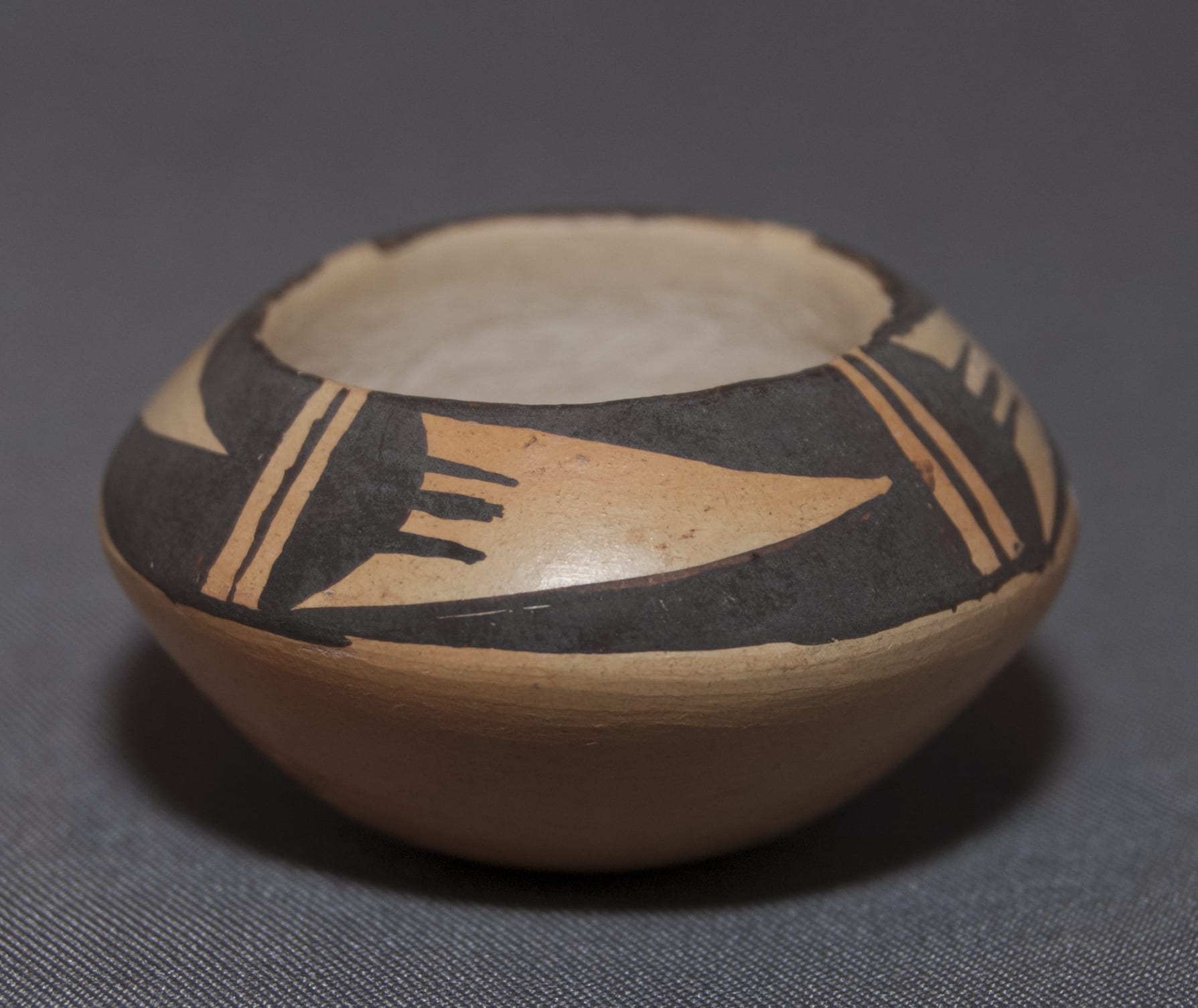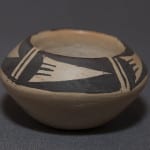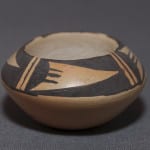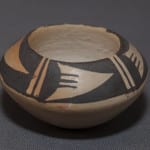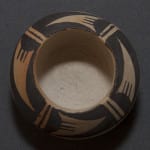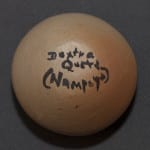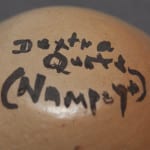Dextra is the most celebrated living Hopi-Tewa potter (Struever, 2001). This pot is perhaps the least impressive pot she ever made.
Dextra began making pottery around 1967, when she was about 40 years old (Barsook 1974:36). In an interview with Marti Struever published in 1996, Marti asked Dextra “How did you decide that you wanted to be a potter?” As part of her response, Dextra said her mother encouraged her, first asking Dextra to paint the solid places on her mother’s pots. “Then one day she told me that it was about time that I should mold. So I started making tiny pots. Then she told me it was about time I do the bigger ones” (Struever 1996:59).
Dextra is known for her precise, creative, and detailed painting. On pot 2011-31, the simple design is quite ordinary and the painting not especially well controlled. (See, for example, the irregularity of the fine lines in the design.) Although the bottom is very small and yet contains 20 characters, the writing is not particularly well formed. Given the “painted perfection” for which Dextra became known, the form of both the design and signature suggest that the painter of 2011-31 was a young potter learning her craft. The bottom reads: “Dextra Quots (Nampeyo).” If the bottom of this pot had been larger, I expect Dextra would have spelled out her full name as “Dextra Quotskuyva (Nampeyo),” the same signature seen on another jar in this collection (1998-03). Struever (2001:89) shows a large Dextra pot made in 1972 with this signature and says it is a format “which Dextra used for only a few years early in her career.” Guy and Doris Monthan write that Dextra began making inch-high miniature pots about 1974-1975 (Monthan 1977:61). Based on its size, the quality of painting and the signature, I conclude that 1974-1975 is a good estimate for the age of pot 2011-31.
Nampeyo and her great-granddaughter Dextra are perhaps the finest Hopi-Tewa potters of the last 100+ years. This collection contains masterpieces by both potters (see 2005-16 and 2010-21). Nevertheless, it amuses me that the collection also contains small, insignificant pots by both potters. The pot formed by Nampeyo was formed near the end of her career when she was functionally blind and it was painted by a daughter (2002-12). Pot 2011-31 by Dextra, in contrast, represents the first budding of her career. The size of this tiny pot severely limits possibilities of design. Nevertheless, pot 2011-31 displays none of the creative genius that would characterize Dextra’s later production. Without the signatures, neither small pot would be of much interest.

